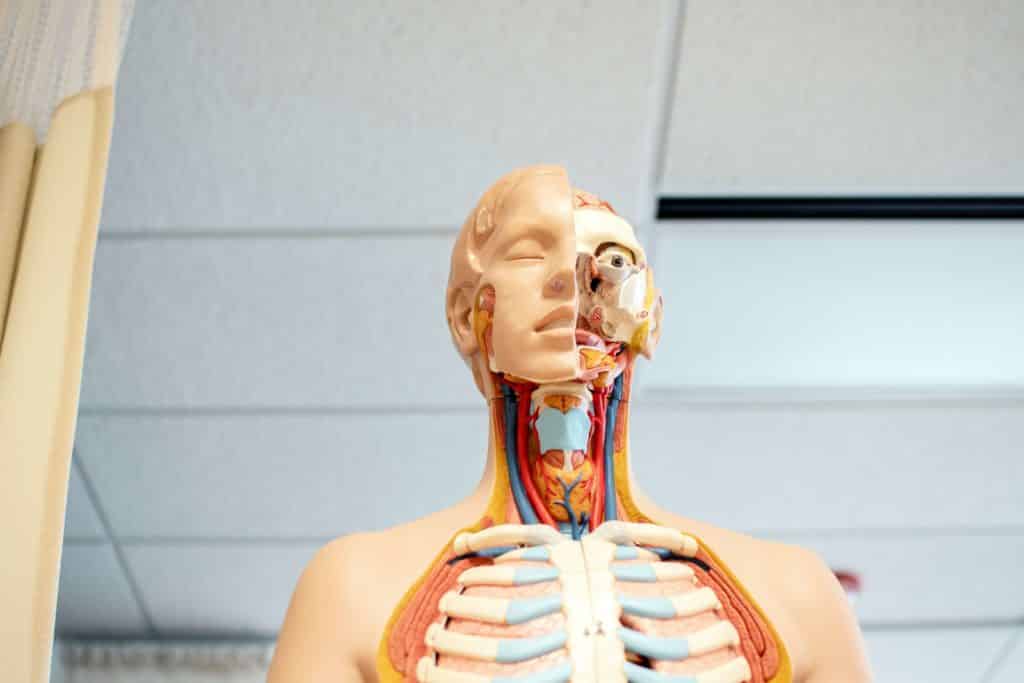What is Neurofibromatosis?
Neurofibromatosis (NF) is a genetic mutation caused by nervous system conditions. It may have various effects on the body, but the main issue is that it might develop peripheral nerve tumors and alter nerve cell formation and growth.
Neurofibromas are benign tumors that form along with the linings of nerves beneath the skin or in deeper parts of the body.
These tumors are generally benign, although they may also be malignant. This illness may cause a variety of abnormalities, which can have a daily impact on sufferers.
The term “neurofibromatosis” refers to three different conditions:
- Type 1 neurofibromatosis (NF1) is also known as von Recklinghausen disease.
- Type 2 neurofibromatosis (NF2)
- Schwannomatosis
Marks and tumors induced by NF1 may change your look in certain people, negatively influencing your mental health. NF2 and schwannomatosis have a lower chance of causing noticeable changes. We’ll concentrate on NF1 on this page since it’s the most likely to cause symptoms that impact your look.
NF is a lifelong illness that affects men and women of all races and ethnicities.
Neurofibromatosis Types
Neurofibromatosis Kind 1 (NF1) is a type of neurofibromatosis often identified at birth or early childhood. Light brown patches on the skin (café au lait spots) or freckles in the armpits and bone abnormalities may be the first indicators. Bumps on the iris (the colored eye area) or beneath the skin (called neurofibromas), low stature, and tumors on the optic nerve are possible later complications.
Neurofibromatosis Type 2 (NF2) is a rarer form of neurofibromatosis that is more likely to be discovered in early adulthood. Tumors often grow along the nerves that control hearing and balance near the brain. Acoustic neuromas, also known as vestibular schwannomas, are tumors of the skull base that may cause hearing loss, balance issues, and facial weakness or paralysis. Other tumors in the brain and spine may cause headaches, sensory difficulties, and muscular weakness.
Schwannomatosis is an uncommon disease that mainly affects young individuals. Tumors may develop along nerves surrounding the brain, spine, and peripheral nerves, causing severe discomfort. Multiple experts are needed to monitor and treat people with neurofibromatosis.
Risk Factors for Neurofibromatosis
Neurofibromatosis is not related to controlled risk factors like most other neurological malignancies since it is inherited. Having a parent with neurofibromatosis is the sole actual risk factor for acquiring the disease. Neurofibromatosis is handed on from parent to kid in about half of all type 1 and type 2 neurofibromatosis cases and roughly 15% of schwannomatosis cases. The remaining diagnoses are the consequence of unforeseen chromosomal alterations and are not linked to particular risk factors.
Types 1 and 2 neurofibromatoses may be risk factors for other neurological disorders, even if they don’t have any acquired risk factors. Consider the following example:
- People with type 1 neurofibromatosis are at an increased risk of developing schwannoma, meningioma, and glioma.
- People with type 2 neurofibromatosis are at an increased risk of developing meningioma, vestibular schwannoma, and spinal cord ependymoma.
Individuals with type 1 or type 2 neurofibromatosis also have a slightly greater risk of malignant (cancerous) peripheral nerve sheath tumors. However, most persons with either of these disorders (about 90%) do not develop cancer.
Symptoms of Neurofibromatosis Type 1
- Coffee (café au lait) has a light brown color. blotches on the skin
- Neurofibromas are a kind of cancer that affects the nerves
- Freckles around the groin or beneath the armpits
- Lisch nodules are little lumps on the iris of the eyes.
- Optic glioma is a term for tumors that develop along the eye’s optic nerve.
- Scoliosis, or spine curvature, is when the spine curves inward.
- Lower leg (tibia or fibula) bowing those fractures and then fails to heal (pseudarthrosis)
- Other types of tumors
- Problems with learning
Type 2 neurofibromatosis (NF2) is substantially less frequent than type 1 neurofibromatosis (NF1) and has completely distinct symptoms. A mutation in the merlin gene causes NF2.
Symptoms of Neurofibromatosis Type 2
- Schwannomas of the cranial and peripheral nerves (tumors that form on the covering of nerves). The vestibular nerve, which connects the inner ear to the brain, is characterized by schwannoma.
- Hearing loss is a common problem.
- Schwannomatosis is a condition that is considerably less prevalent than NF2. Symptoms usually appear in early adulthood, although they might appear as late as infancy or adolescence.
Symptoms of Schwannomatosis
- Schwannomas, similar to NF2, but on the vestibular nerves very infrequently.
- Numbness
- Weakness
- Tingling
- Headaches
- Chronic pain may strike at any time and in any portion of the body.
Neurofibromatosis Causes
In certain circumstances, NF is passed down from one’s parents. NF may also be caused by a new genetic variation in the sperm or egg cells rather than inherited from parents.
NFI and NF2 are produced by detrimental variations in two separate genes that may be passed down through the generations. NF1 is caused by damaging changes in the NF1 gene found on chromosome 17, whereas NF2 is caused by harmful differences in the NF2 gene located on chromosome 22. Generations are not skipped in NF.
The *NF1* gene controls the synthesis of neurofibromin, a protein that inhibits the growth of tumors. When a gene malfunctions, it may result in a nonfunctional form of neurofibromin or decreased production of neurofibromin, causing cellular growth and division to be interrupted, leading to tumor development. The complete NF1 gene (and, in rare situations, material from other nearby genes) may be absent in some instances, which helps to explain why symptoms vary so much from patient to patient.
The NF2 gene differs from the NF1 gene genetically. Vestibular schwannomas, benign auditory nerve tumors, and tumors in other body regions define it. This causes issues with balance, ringing in the ears, and hearing loss.
Autosomal dominant inheritance is thought to be the case for both NF1 and NF2. Every person has two sets of genes, one from their mother and the other from their father.
Individuals with NF1 or NF2 require one copy of the gene to be defective to develop the disease. The non-working gene is inherited from a parent in around half of the instances.
The other half of the instances are caused by a novel genetic alteration that affects individuals with no family history of the disease.
In other words, if one parent has NF, each kid has a 50/50 chance of acquiring it. If a parent has a non-working copy of the NF1, the kid has a 50/50 chance of inheriting it and developing Neurofibromatosis Type 1.
Similarly, if one parent has a non-working copy of the NF2 gene, the kid has a 50/50 chance of inheriting the non-working copy and developing Neurofibromatosis Type 2.
The NF1 gene is enormous, and it has one of the most incredible mutation rates of any human gene (1:10,000). Although research into why the rate is so high is still underway, conjecture indicates that it might be related to the size of the gene, which could contribute to a higher likelihood of random mistakes during cellular development.
Anyone with a family history of NF should seek genetic counseling.
Diagnosis
Exams of the ears
Hearing and balance issues in patients with NF2 may be assessed with tests such as audiometry, electronystagmography, and brainstem auditory evoked response.
Exams of the eyes
A physician may find Lisch nodules, cataracts, and tumors on the optic nerve with a complete eye examination.
Imaging
Bone abnormalities, tumors in the brain or spinal cord, and tiny tumors on nerve tissue throughout the body may all be detected using imaging X-rays, CT scans, or MRIs. An MRI may aid in detecting optic nerve cancers, and imaging studies may assist in monitoring NF2 and schwannomatosis by a physician.
Genetic Examinations
NF1 and NF2 tests are available, and in certain situations, they may be used to determine the diagnosis before the baby is born.
Treatment for Huntington’s illness
Huntington’s illness has no known cure, and nothing can halt or reverse the progression of the disease. The purpose of therapy is to alleviate symptoms as much as possible, and this will assist you in remaining functional for as long as feasible.
The condition does not have a single therapy. Some symptoms may be treated with medications, and some “antipsychotic” drugs, for example, may aid with uncontrolled bodily movements.
The majority of medicines used to treat uncontrollable body movement have adverse effects, and they may make you feel nauseous, drowsy, or agitated. Other symptoms linked with Huntington’s disease may be exacerbated by movement disorder medications, such as tight muscles.
It is vital to adapt your daily life to the disorder’s symptoms. Various therapy may be beneficial, and you may need:
- Walking as a form of physical rehabilitation
- Occupational therapy is a kind of treatment that focuses on (activities using your hands)
- Speech-language pathology (to help with slurred speech or trouble swallowing)
You may also need support with everyday duties at home. Cooking, cleaning, and other mundane tasks may fall under this category. As your condition worsens, you may need assistance with dressing, eating, and toileting. You may need 24-hour care at some point.


